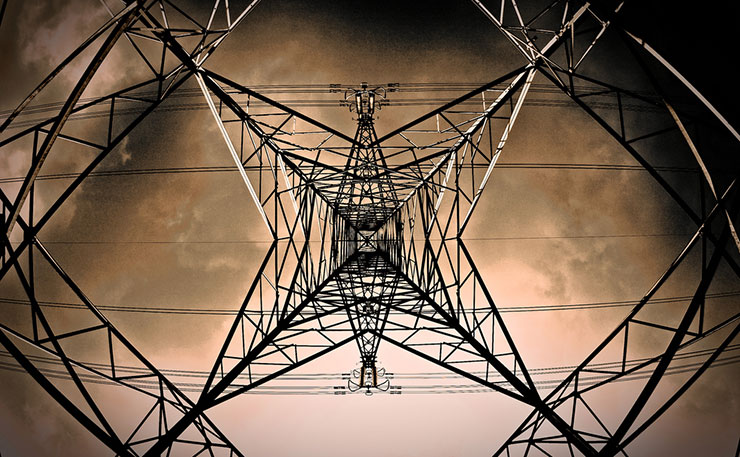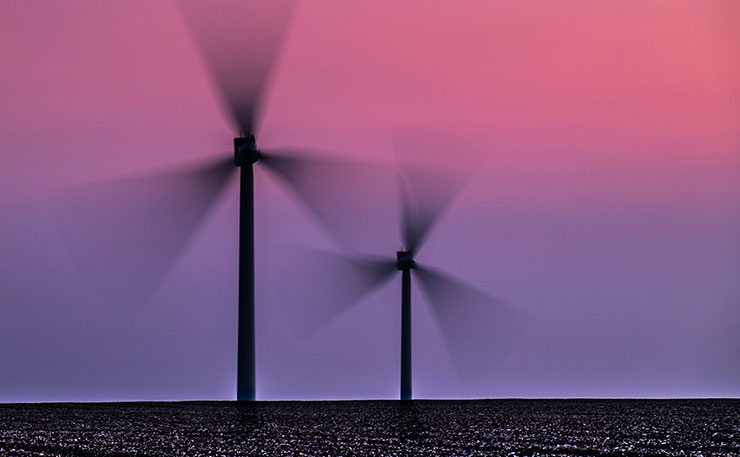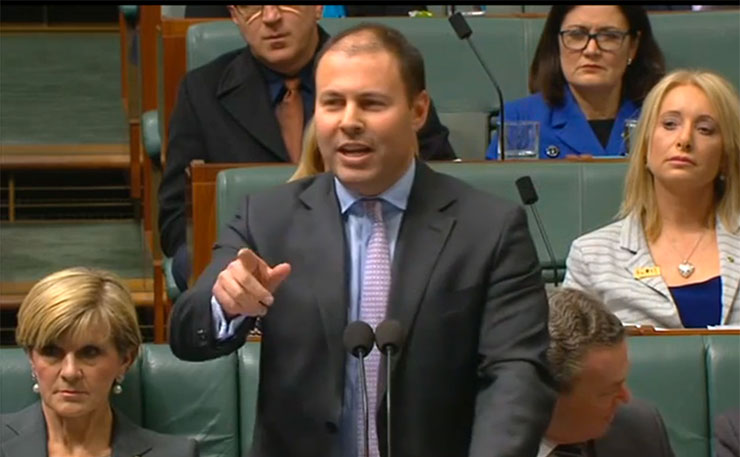South Australia’s new power plan shows that after years of cheap populism, the Coalition has lost control of the energy policy debate. Ben Eltham explains.
Yesterday, South Australian Premier Jay Weatherill did something rather unusual in Australian politics. He partly nationalised an industry.
With the departure of Colin Barnett on the weekend, the South Australian Premier is now the longest serving leader at state or federal level. He’s learnt a few things on the job, you might say. One of them is that bashing Sydney and Canberra is a winning tactic for any premier of a small state.
After the blackouts in September last year and then again this summer, something had to give. Yesterday, we found what it was: the market.
In announcing a new $550 million energy plan for South Australia, Weatherill took control of a debate that has been mired in controversy and confusion.
Weatherill announced that South Australia would take charge of its energy problems and solve the crisis with its own resources. The frank and obvious subtext to Weatherill’s media conference was that the National Electricity Market has failed.
As energy expert Hugh Saddler writes in The Conversation today, “taken together, the various elements of the plan can be read as a list of how exactly the SA government considers [the NEM]to be failing, and what powers the state proposes to assume in order to get it fixed”.
In effect, South Australia is turning its back on 20 years of energy policy. Markets are out; state ownership is back.

As the Guardian’s Katherine Murphy noted, “after decades of privatisation of government assets it might be hard to wrap your mind around the idea of a government building its very own gas-fired electricity generator – but here we are folks, back to the future”.
South Australia’s energy problems are well known. The southern state has a world-leading wind power sector. It also has ageing fossil fuel plants and a vulnerable electricity grid infrastructure. The national “market” in electricity is delivering sky-rocketing prices at the same time that demand is falling. No wonder the public and the SA government are losing patience.
The “vision” of the new plan, Weatherill claimed, is “to source, generate and control more of South Australia’s power supply in South Australia so we can increase self-reliance and provide reliable, competitive and clean power for all Australians into the future”.
To do this, South Australia will spend $360 million to build a new, state-owned and operated 250-megawatt gas plant. It will also tender for $150 million worth of battery storage, in what looks like a reverse auction for battery entrepreneurs like ZEN Energy and Elon Musk’s Tesla. And the state will order in 200 megawatts of temporary generation capacity, probably in the form of diesel generators. These are expected to be in place by next summer, when power demand is next likely to put pressure on South Australia’s grid.
In pure policy terms, it is a dirty and rather inefficient policy. As a number of energy experts have already pointed out, a gas plant will take several years to build and will be hostage to rising domestic gas prices. There are cheaper and cleaner ways to provide electricity quickly. But Weatherill obviously felt that a state-owned gas plant was necessary to ensure South Australia can generate and control its electricity supply.
On the other hand, there are aspects of the policy that are genuinely revolutionary. Weatherill’s policy’s commitment to build one of the biggest utility-scale batteries in the world will supercharge battery development in Australia, and almost certainly lead to grid-scale battery roll-outs in the rest of the country. Weatherill will issue tenders for other forms of energy storage, perhaps giving stored hydro projects a leg up.

South Australia will also legislate to override the National Electricity Market and “instruct” the Australian Energy Market Operator to keep power in South Australia on high-demand days. This will allow the South Australian government to effectively take over the Heywood interconnector with the eastern grid, thus lowering the risk of the interconnector tripping. It was the Heywood trip in September (after the storm had toppled power lines) that directly led to the whole South Australian grid going black.
To say South Australia has lost confidence in AEMO is an understatement. In an interview with Renew Economy’s Giles Parkinson yesterday, SA’s Energy Minister Tom Koutsantonis all but blamed AEMO for not better preparing for recent supply shortfalls. In January, AEMO restricted supply on the Liddell to Muswellbrook interconnector to protect the New South Wales grid – the kind of action that it didn’t take in September in South Australia. In February, AEMO also triggered rolling blackouts in South Australia, after ordering load shedding in hot weather. Extra generation was available at an idle gas generator, but AEMO didn’t tell the plant to switch on.
As Koutsantonis told Parkinson, if South Australia had the power to take charge of the South Australian grid, “the first thing I would do is to constrain the interconnector… I would have done everything I could to minimise [the risk of a blackout]. AEMO didn’t.”
These are extremely serious accusations, effectively implying that the national energy market operator failed to do everything it could to keep the lights on. No wonder South Australia is turning its back on the national electricity grid and its dysfunctional operator.
South Australia’s plan also poses big problems for AEMO, potentially making it much harder to manage the national grid. As QUT’s Jeffrey Sommerfield points out, “an interstate scheme cannot be fixed by the unilateral actions of one state government – in this case, it is likely to be worsened”.
Sommerfield is right: the NEM is a national problem and needs a national solution. Unfortunately, the federal government of Malcolm Turnbull shows little sign of understanding the complexities of energy policy, instead preferring to play partisan politics with energy at seemingly every turn.
Time and again, when faced with difficult policy questions about Australia’s energy future, Turnbull and his colleagues such as Energy Minister Josh Frydenberg have banged the populist drum, blaming renewable energy and refusing to consider reforms.

Frydenberg and Turnbull blamed the September blackout on wind power – incorrectly, as we now know. They have blocked reforms, consistently refusing to put in place a comprehensive policy to manage the retirement of clapped-out coal plants like Hazelwood that are reaching the end of their working lives. And they have done nothing to reform the disastrous operating rules of the National Electricity Market: especially the notorious “30-minute rule” that allows fossil fuel generators to legally rort wholesale electricity prices.
We won’t even bother talking about the Coalition’s view when it comes to putting any restrictions on carbon pollution.
And so it goes. Frydenberg and Turnbull’s response to the South Australian plan was predictable: to blame renewables and attack South Australia in partisan political terms. Turnbull blamed the states for not allowing more fracking. Frydenberg said he was taking legal advice on whether South Australia could override AEMO.
The predictable reaction shows just how far behind the Coalition is on energy policy. In recent months we’ve learned that Australia will collect almost no tax from natural gas exports, despite being the second-largest natural gas exporter in the world. Qatar collects tens of billions. Even more bizarrely, Japan, the destination for most of our exports, will actually collect more tax on our gas through import levies than we will collect from the companies exporting it.
Australia’s gas policy is a system of corporate generosity that has no parallel anywhere in the industrialised world. For years, successive governments have insouciantly allowed gas companies to build liquification plants to vacuum up all our domestic gas production for export. Now that the vacuum is sucking, governments are suddenly surprised that the price of gas is spiking. It will keep rising: the big gas combines have signed forward contracts so large, any extra production will simply flow straight to export.
The government knew the gas spike was coming, but did nothing. Everyone in the industry has known about it for years. New Matilda first reported on the looming gas price rises in 2012.
The Coalition is massively out of touch on energy. The problem is, like so many who are out of touch, Turnbull and Frydenberg can’t see it.
For years, bashing the carbon tax was great politics for conservatives, allowing them to posture as the party of lower electricity prices and lower taxes. But electricity prices have soared since the abolition of the carbon tax, and a grid reliant on fossil fuels has failed to keep the lights on. The public never liked electricity privatisation. They are likely to welcome re-nationalisation.
Energy privatisation has been a 20-year failure. As economist John Quiggin observes, we were promised more efficiency and lower prices. We got neither. Instead, big energy companies have booked record profits. They’ve been able to do so because the national electricity grid is overseen by a weak regulator that has failed to keep the lights on, even while allowing price gouging at every level of electricity generation and distribution.
The jig is up on energy policy. Renewables have won. Energy was once an issue that played in the Coalition’s favour. But now the political dynamics of energy have reversed, and Turnbull is struggling to keep up.
Donate To New Matilda
New Matilda is a small, independent media outlet. We survive through reader contributions, and never losing a lawsuit. If you got something from this article, giving something back helps us to continue speaking truth to power. Every little bit counts.





